
Emilie Charlotte, Lady de Bathe, known as LillieLangtry and nicknamed "The Jersey Lily", was a British socialite, stage actress and producer.
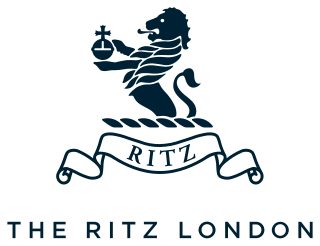
The Ritz London is a 5-star luxury hotel at 150 Piccadilly in London, England. A symbol of high society and luxury, the hotel is one of the world's most prestigious and best known. The Ritz has become so associated with luxury and elegance that the word "ritzy" has entered the English language to denote something that is ostentatiously stylish, fancy, or fashionable.

Sir Ian Zachary Malcolm, 17th Laird of Poltalloch, KCMG was a Conservative Member of Parliament and Chieftain of the Clan Malcolm/MacCallum.
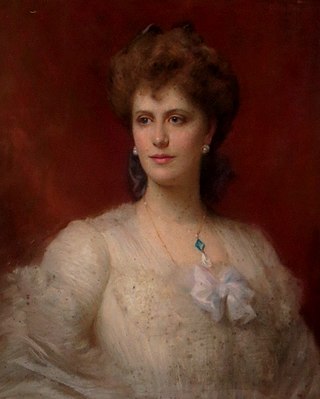
Alice Frederica Keppel was an aristocrat, British society hostess and a long-time mistress of King Edward VII.

George Francis Miles was a London-based British artist who specialised in pastel portraits of society ladies, also an architect and a keen plantsman. He was the artist in chief of the magazine Life, and between 1877 and 1887 he contributed text and botanical illustrations to The Garden, a weekly journal published in London by William Robinson.
Hugh John Massingberd, originally Hugh John Montgomery and known from 1963 to 1992 as Hugh Montgomery-Massingberd, was an English journalist and genealogist. He was chief editor of Burke's Peerage/Burke's Landed Gentry from 1971 to 1983.
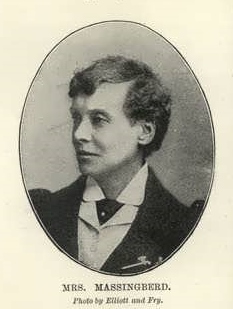
Emily Caroline Langton Massingberd, known as Emily Langton Langton from 1867 to 1887, was a women's rights campaigner and temperance activist.

The Royal Aquarium and Winter Garden was a place of amusement in Westminster, London. It opened in 1876, and the building was demolished in 1903. The attraction was located northwest of Westminster Abbey on Tothill Street. The building was designed by Alfred Bedborough in an ornamental style faced with Portland stone. The Aquarium Theatre was located in the west end of the building and was renamed the Imperial Theatre in 1879. Methodist Central Hall now occupies the site.

Kentford is a village and civil parish located in the West Suffolk district of Suffolk in eastern England. Situated on the banks of the River Kennet, the village is positioned on the B1506 road connecting Newmarket to Bury St. Edmunds. The village is served by the Kennett railway station, located just off the A14, which offers an indirect railway connection to London via Cambridge. Kentford is located about four miles northeast of Newmarket and nine miles west of Bury St. Edmunds. The village falls within the Bury St. Edmunds division of the county and is divided between the Lackford and Risbridge Hundred. Kentford is also part of the Newmarket petty sessional division, Mildenhall union and county court district, rural deanery of Newmarket, archdeaconry of Sudbury, and diocese of St. Edmundsbury and Ipswich. The population of Kentford was estimated to be 1125 as of 2021.

Lillian West, better known by the pen name Amy Leslie, was an American actress, opera singer, and drama critic.
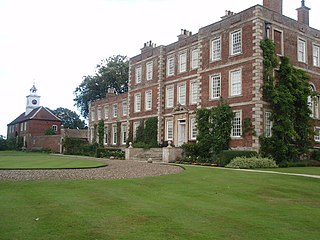
Gunby Hall is a country house in Gunby, near Spilsby, in Lincolnshire, England, reached by a half mile long private drive. The Estate comprises the 42-room Gunby Hall, listed Grade I, a clocktower, listed Grade II* and a carriage house and stable block which are listed Grade II. In 1944 the trustees of the Gunby Hall Estate, Lady Montgomery-Massingberd, Major Norman Leith-Hay-Clarke and Field Marshal Sir Archibald Montgomery-Massingberd, gave the house to the National Trust together with its contents and some 1,500 acres of land.
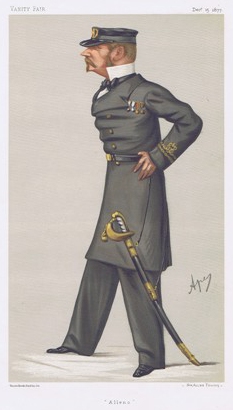
Sir Allen William Young, was an English master mariner and explorer, best remembered for his role in Arctic exploration including the search for Sir John Franklin.
Vernon Lushington KC,, was a Positivist, Deputy Judge Advocate General, Second Secretary to the Admiralty, and was associated with the Pre-Raphaelites. He was a Cambridge Apostle.

Captain James Octavius Machell (1837–1902) was an influential figure in British horse racing during the final decades of the 19th century. He was a respected judge of horses and an astute and highly successful gambler. During a career that lasted almost forty years he managed and trained eleven English classic winners and was himself the owner of a record three Grand National winners.
John Arthur James, MVO DL (1853–1917) was the son of a wealthy Liverpool merchant who became a friend of the Prince of Wales, sharing his interest in horse racing. In 1885 he married Mary Venetia Cavendish-Bentinck (1861–1948), godmother to Queen Elizabeth The Queen Mother.

Frederick Gebhard was a wealthy New Yorker who at the age of 22 became infatuated with Lillie Langtry, a renowned beauty, who had been elevated to celebrity status following her affair with Edward, Prince of Wales. A relationship developed between Gebhard and Langtry that lasted nine years. There was speculation that they would one day marry but this never materialized.

Frederic E. Webb (1853–1917) was a British Classic winning jockey.
Edward Langtry (1847–1897) married Emilie Charlotte Le Breton on the island of Jersey in 1874. She later took to the stage as actress Lillie Langtry, and became involved in a relationship with Edward, Prince of Wales. Langtry and his wife eventually separated and she obtained a divorce in 1897. Langtry died from a brain haemorrhage in the same year after a fall during a steamer crossing from Belfast to Liverpool.

East Cliff is a suburb and ward in Bournemouth, Dorset, England.
King Edward's Place is a country house at Foxhill near Wanborough and Liddington in Wiltshire. It is currently known as PGL Liddington and is owned and operated by children's adventure holiday operator PGL. Previous names for the estate include Foxhill Stud Farm and Foxhill Manor.
















